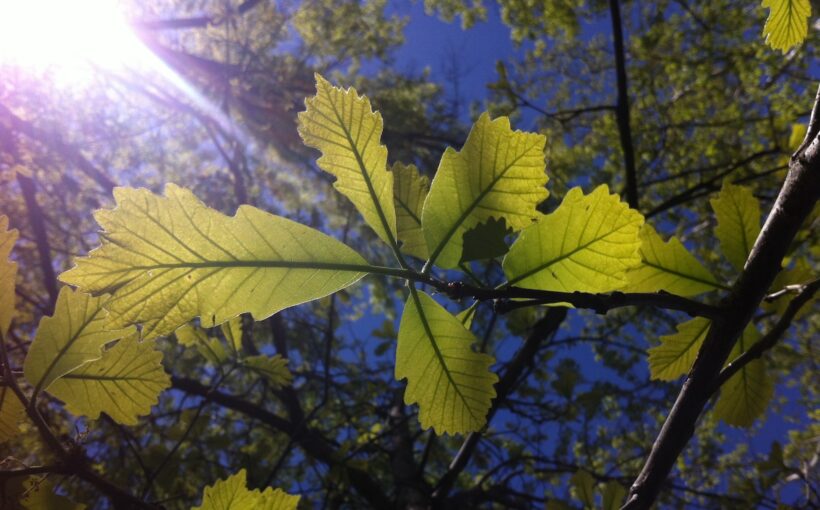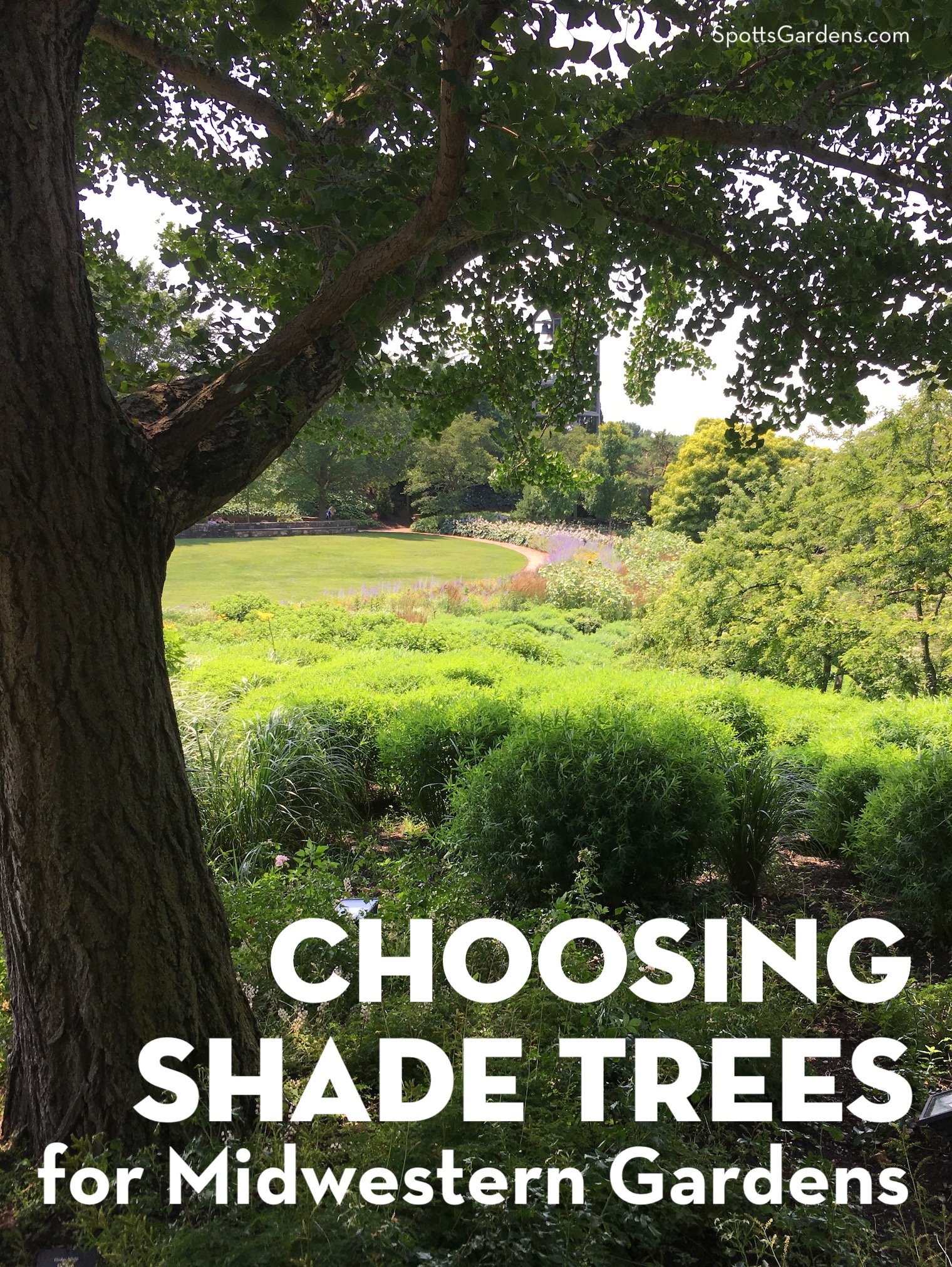If you have the room, plant a shade tree! While adding any tree to your yard has environmental benefits—they regulate stormwater runoff, increase urban diversity, and mitigate climate change by absorbing carbon dioxide—large shade trees are particularly valuable. Placing trees correctly can reduce the need for air conditioning by 30 percent and heating by 20 to 50 percent!
Choosing the Right Shade Trees
We’re pretty picky about the shade trees we choose for our clients’ gardens. For urban and suburban yards, we want trees that:
- Are suited to the site in terms of light, soil, and available water. We always look for “right plant, right place.”
- Will be part of the tree canopy, which means that they’ll be taller than 40′ at maturity.
- Are underrepresented in the tree canopy. Diversity makes for healthier plantings, so we avoid very popular trees like red maples in favor of less-common choices.
- Are native to this area if at all possible. They support a much wider diversity of pollinators than non-native trees do.
- Are not prone to weak wood or breakage, especially in urban sites.
- Are not subject to significant damage from pests or disease. Thanks to emerald ash borer, ashes are off the list for the foreseeable future.
- Don’t drop large amounts of hazardous litter, especially fruit that can cause slipping hazards (and those poky sweet gum balls).
Remember, these are larger trees! So choose placement carefully, well away from power lines and other overhead hazards.
Gleditsia triancanthos f. inermis (Thornless honey locust)
With small, compound leaves and tolerance for urban conditions, honey locust cultivars are popular choices for street trees. The shade cast by this Indiana native is lighter and more dappled than that of most of our selections. And those tiny leaves are easy to clean up!
Honey locust prefers full sun but can handle a wide range of soil types. Choose one of the cultivars instead of the very large straight species. Several thornless cultivars are available, including ‘Imperial,’ ‘Skyline,’and ‘Sunburst,’ among others.
Liriodendron tulipifera (Tulip tree, tulip poplar)
Magnificent in stature, the tulip tree is the state tree of Indiana (and Kentucky and Tennessee). Plant it in full sun and average soil. Liriodendron tulipifera is massive, up to 90′ tall and 50′ wide at maturity. If you’re planting in a small- to medium-sized yard, choose one of the cultivars, like ‘Emerald City’ or ‘Little Volunteer.’
This Indiana native takes its name from its yellow-and-orange tulip-shaped blooms, which draw in loads of bees, birds, and butterflies. Although it’s also called “tulip popular,” Liriodendron tulipifera is not actually a poplar.
Nyssa sylvatica (Black gum, black tupelo)
A terrific choice for rain gardens and other damp spots, Indiana native Nyssa sylvatica makes a big splash in fall with its scarlet color. While it has a pyramidal shape when young, it develops a more rounded shape at maturity. It grows 30′ to 50′ tall by 20′ to 30′ wide. ‘Afterburner‘ and ‘Wildfire’ are popular cultivars.
Black gum grows in full sun to part shade and average to wet soil, although it can also handle some drought. Pollinators love the early flowers, and the oval-shaped fruits draw in birds and wildlife.
Quercus muehlenbergii (Chinkapin oak)
Chinkapin oak is one of our favorite choices for drier soil. An Indiana native, Quercus muehlenbergii prefers full sun and average to dry soil. It has an open, rounded crown at maturity, and it grows 40′ to 60 tall and 50′ to 70′ wide. As part of the white oak group, it sidesteps diseases that affect the red oak group, including the emerging problem of sudden oak death.
Chinkapin oak takes about 30 years to drop its first crop of acorns. The acorns themselves are small and an excellent food source for wildlife. And Quercus is a keystone genus, supporting a disproportionately large number of insects at the base of the food web.
Tilia americana (American linden, basswood)
Indiana native Tilia americana is a good choice in larger, suburban yards. Grow it in full sun to part shade; it does fine in average soil. The species is quite large, growing 50′ to 80′ tall and 30′ to 50′ wide. Smaller cultivars are available, including ‘Frontyard’ and ‘American Sentry.’ Basswood is not tolerant of urban conditions, so some of the European lindens (Tilia cordata, T. tomentosa) are a better choice for city yards.
Linden flowers are particularly attractive to pollinators and make for great honey. These trees drop flower litter in late spring.
Ready to Add Shade Trees to Your Garden?
Contact us to schedule your garden coaching. We’ll find the right ones for you!

